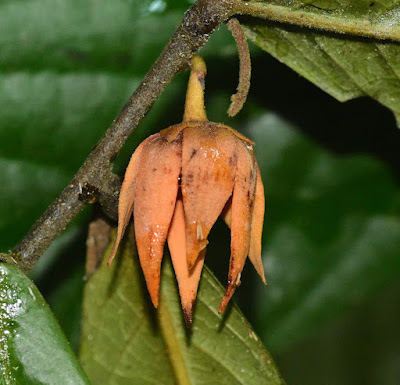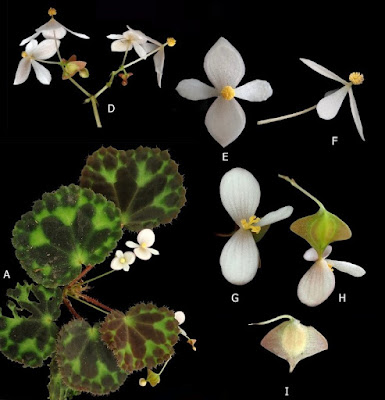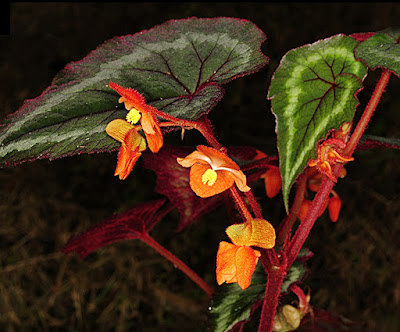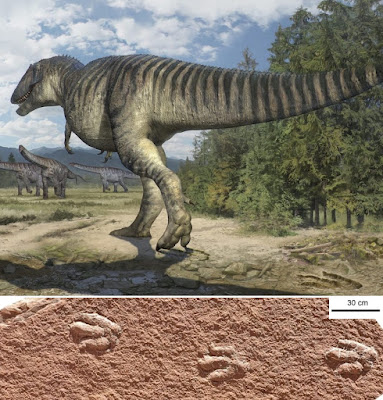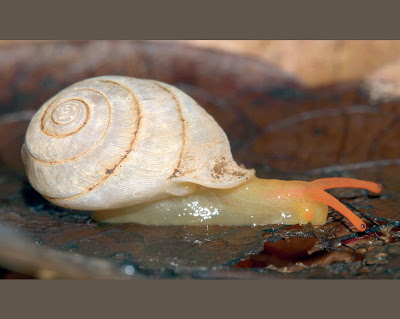[Most Recent Entries] [Calendar View]
Monday, July 12th, 2021
| Time | Event | ||
| 12:06a | [Botany • 2021] Polyalthia heliopetala & P. taweensis (Annonaceae) • Two New Species and A New Record of the Genus Polyalthia from Peninsular Thailand
Abstract Two new species of Polyalthia from Peninsular Thailand, Polyalthia heliopetala and P. taweensis, are described and illustrated. Polyalthia heliopetala most closely resembles P. oblonga and P. motleyana. Polyalthia taweensis most closely resembles P. obliqua. Polyalthia pumila is newly reported for Thailand from a single locality; the species was previously known only from two localities in Peninsular Malaysia and has not been re-collected in over 100 years. Keywords: Magnoliids, Annonaceae, Polyalthia, new species, new record, Peninsular, Thailand เหลืองสุริยา Polyalthia heliopetala Leerat. & Bunchalee นรามรกต Polyalthia taweensis Bunchalee & Leerat. แสดศรีนรา Polyalthia pumila Ridl. Pasakorn Bunchalee, Charan Leeratiwong and David M. Johnson. 2021. Two New Species and A New Record of the Genus Polyalthia (Annonaceae) from Peninsular Thailand. Phytotaxa. 510(3); 239–250. DOI: 10.11646/phytotaxa.510.3.4 ตัวอย่างพืชสกุล Polyalthia ของพืชวงศ์กระดังงา (Annonaceae) จากอำเภอจะแนะและอำเภอระแงะ จังหวัดนราธิวาส ก็ได้รับการตีพิมพ์ในวารสาร Phytotaxa ซึ่งเป็นวารสารระดับนานาชาติ โดยมีพืชที่จัดเป็นพืชชนิดใหม่ของโลกจำนวน 1. พืชชนิดใหม่ของโลก คือ เหลืองสุริยา (Polyalthia heliopetala Leerat. & Bunchalee, ดอกสีเหลืองแกมส้ม) และ นรามรกต (Polyalthia taweensis Bunchalee & Leerat., ดอกสีเขียว) 2. พืชรายงานพบครั้งแรกในประเทศไทย คือ แสดศรีนรา (Polyalthia pumila Ridl., ดอกสีแดง) ซึ่งมี ผศ.ดร.ภาสกร บุญชาลี เป็นผู้เขียนหลัก โดยมี Prof. Dr. David Johnson และ ผศ.ดร.จรัล ลีรติวงศ์ ร่วมเขียนรายงานการค้นพบ | ||
| 1:09a | [Botany • 2021] Begonia robii (Begoniaceae) • A New Species of Begonia from Lima Puluh Kota, West Sumatra, Indonesia
A new species of Begonia sect. Jackia (Begoniaceae), Begonia robii Ardi & Girm., is described from West Sumatra and is a limestone karst endemic in the Tanah Datar dan Lima Puluh Kota Regency. Its provisional IUCN threatened category is considered to be Endangered. Keywords: Endemic, limestone, Jackia Begonia robii Ardi & Girm. sp. nov. § Jackia. A limestone adapted species closely related to Begonia droopiae Ardi (Ardi & Hughes, 2010), in terms of its habit and variegated leaves, however it can be easily distinguished by its rounded leaf apex which have pale green blotches between the veins (not acuminate at the apex and green on the veins only), outer male flower tepals which are elliptic to obovate with an acute to rounded apex (vs. elliptic to suborbicular with a rounded apex), female flowers with two or three tepals, outer tepals 4‒12 × 7‒8.5 mm, elliptic (vs. female flower with three tepals, outer tepals 5.5‒6 × 4.5‒ 6 mm, orbicular to suborbicular), ovary ca. 8 × 5‒ 6 mm, ovoid to ellipsoid, wings equal to subequal with a truncate to cuneate base, and a cuneate apex (vs. globose to broadly ellipsoid ovary, 6‒7 × 10‒13 mm, wings equal with rounded base and apex). Distribution. Sumatra, endemic to West Sumatra, Lima Puluh Kota and Tanah Datar Regencies (Harau valley, Lintau Buo and Halaban). Fig. 1. Etymology. The epithet is after the collector, Robi Satria. Wisnu Handoyo Ardi, Deden Girmansyah and Mark Hughes. 2021. Begonia robii, A New Species of Begonia from Lima Puluh Kota, West Sumatra. Reinwardtia. 20(1); 37-41. DOI: 10.14203/reinwardtia.v20i1.4141 ABSTRAK ARDI, W. H., GIRMANSYAH, D. & HUGHES, M. 2021. Begonia robii, jenis baru Begonia dari Lima Puluh Kota, Sumatra Barat. Reinwardtia 20(1): 37–41. — Jenis baru Begonia seksi Jackia (Begoniaceae) dipertelakan dari Sumatra Barat, dan merupakan jenis endemik bebatuan kapur di Kabupaten Tanah Datar dan Lima Pulu Kota. Evaluasi status konservasi berdasarkan IUCN untuk Begonia robii adalah terancam. Kata kunci: Endemik, batu kapur, Jackia. | ||
| 1:56a | [Botany • 2021] Begonia xuansonensis (Begoniaceae) • A New Orange-flowered Species of Begonia from northern Vietnam
Abstract Begonia xuansonensis, a new species from northern Vietnam, is described and illustrated. The new species is characterized by reddish-orange to orange tepals, which is a rare type of flower coloration in Asian species of the genus. Begonia xuansonensis is most similar to B. lowiana, but differs from the latter by stipules 4–6 × 1.5–2 mm, orange tepals and ovary, and abaxially densely red setose inner tepals of staminate and pistillate flowers. The new species also shows similarity with B. cathayana, differing in stipules 4–6 mm long, uniformly dark green adaxial side of leaf blade, abaxially densely red setose inner tepals of a staminate flower and three styles in a pistillate flower. Begonia xuansonensis is tentatively assigned to B. sect. Platycentrum on the basis of actinomorphic androecium, apically rounded anthers and fruit with three unequal wings. Morphological description and detailed photographs of the new species are provided, accompanied by information on its ecology, provisional conservation status, and a taxonomic comparison with similar species. Keywords: Eudicots, eastern Indochina, Karst, Plant diversity, Section Platycentrum, Southeast Asia, Xuan Son National Park Begonia xuansonensis T. V. Do, Nuraliev & Y. M. Shui Truong Van Do, Yu-Min Shui, Phuc Van Le, Hue Thu Thi Huynh, Andrey N. Kuznetsov, Svetlana P. Kuznetsova and Maxim S. Nuraliev. 2021. Begonia xuansonensis, A New Orange-flowered Species of Begoniaceae from northern Vietnam. Phytotaxa. 510(3); 251–262. DOI: 10.11646/phytotaxa.510.3.5 | ||
| 2:11a | [Paleontology • 2021] Eubrontes nobitai • The New Ichnotaxon and Other Saurischian Tracks from the Lower Cretaceous of Sichuan Province and A Review of Chinese Eubrontes-type Tracks Abstract The Jiaguan Formation and the underlying Feitianshan Formation (Lower Cretaceous) in Sichuan Province yield multiple saurischian (theropod–sauropod) dominated ichnofaunas. To date, a moderate diversity of six theropod ichnogenera has been reported, but none of these have been identified at the ichnospecies level. Thus, many morphotypes have common “generic” labels such as Grallator, Eubrontes, cf. Eubrontes or even “Eubrontes-Megalosauripus” morphotype. These morphotypes are generally more typical of the Jurassic, whereas other more distinctive theropod tracks (Minisauripus and Velociraptorichnus) are restricted to the Cretaceous. The new ichnospecies Eubrontes nobitai ichnosp nov. is distinguished from Jurassic morphotypes based on a very well-preserved trackway and represents the first-named Eubrontes ichnospecies from the Cretaceous of Asia. Keywords: Ichnofossils, Dinosaur footprints, Theropod, Myths Taxonomy of Jinyuxi site Theropoda Marsh 1881 Eubrontidae Lull 1904 Eubrontes Hitchcock 1845, Olsen et al. 1998 Type ichnospecies E. giganteus Hitchcock 1836, Hitchcock 1845, Olsen et al. 1998
Eubrontes nobitai ichnosp. nov. Holotype: A complete natural cast of a pes track represented by four footprint trackways was catalogued as JYX-T1-L1 from the Jinyuxi track site (Table 1; Figs. 2 and 3). The plaster mold is stored in the Zigong Dinosaur Museum. Type horizon and locality: Lower Cretaceous, Jiaguan Formation, Jinyuxi track site, Gulin County, Sichuan Province, China. Diagnosis: A relatively large-sized tridactyl footprint with pes length/width ratio of 1.4, weak mesaxony of 0.37, and relatively small divarication angle (about 47°) between digit II and IV. Digit III is 65% of the total pes length. Digit II is 85% of the length of digit III. The metatarsophalangeal pads of digit II are fairly well developed, with a size almost as large as the phalangeal pad of digit IV. The metatarsophalangeal pads lie sub-symmetrically on either side of the midline of the track. This is a feature that differentiates the tracks from many less symmetrical theropod tracks including some Eubrontes, Asianopodus and Chapus. Step length is about 2.6× footprint length, and the mean pace angulation is high (about 160°). E. nobitai is different from the type ichnospecies E. giganteus by (1) wider digit II–IV divarication, (2) weaker mesaxony, and (3) lower length/with ratio; and, different from E. zigongensis, E. veillonensis and E. nianpashensis by (1) smaller digit II–IV divarication and (2) weaker mesaxony. Etymology: The specific name honors Mr. Nobi Nobita (known as Noby in the English versions). He is the protagonist of the Doraemon series. Japanese animated films Doraemon: Nobita’s Dinosaur in 1980 and Doraemon: Nobita’s New Dinosaur in 2020 are unforgettable dinosaur films. In the film, Mr. Nobita’s dream is to have a dinosaur named after him. Conclusions: Eubrontes nobitai described firstly in this study is found in a well-defined trackway, comprising four extremely well-preserved tracks: 3 on the 0–1–2-3 scale proposed by Belvedere and Farlow (2016); and is the only Chinese theropod ichnotaxon that bears a close resemblance to type Eubrontes. Therefore, it is an important theropod morphotype with the potential to help better understand the morphological variation of Eubrontes and Eubrontes-like tracks in space and time. Ongoing studies (Xing et al. 2021; Xing et al. in press) have noted that the large theropod tracks Asianopodus and Chapus need to be compared with such widely distributed theropod ichnogenera as Eubrontes to conduct further research. Sauropod tracks from the Jinyuxi track site are classified in Brontopodus type tracks. This is consistent with the previous sauropod track records of the Jiaguan Formation. Some poorly preserved tracks show the affinity of deinonychosaurian tracks, which are also clearly recorded in the Jiaguan Formation. Li-Da Xing, Martin G. Lockley, Hendrik Klein, Li-Jun Zhang, Anthony Romilio, W. Scott Persons IV, Guang-Zhao Peng, Yong Ye and Miao-Yan Wang. 2021. The New Ichnotaxon Eubrontes nobitai ichnosp. nov. and Other Saurischian Tracks from the Lower Cretaceous of Sichuan Province and A Review of Chinese Eubrontes-type Tracks. Journal of Palaeogeography. 10: 17. DOI: 10.1186/s42501-021-00096-y | ||
| 9:08a | [Mollusca • 2021] Perrottetia rajeshgopali • A New Species of Perrottetia Kobelt, 1905 (Stylommatophora: Streptaxidae) from the Western Ghats, India
Abstract We describe a new species of the carnivorous land snail genus Perrottetia from the northern Western Ghats in Maharashtra, India, the first to be described in 117 years. Perrottetia rajeshgopali n. sp. differs from the other Indian Perrottetia species in shell characters, having a conical spire, angular last whorl, and seven apertural lamellae. We also describe the genital anatomy characterised by the presence of hooks in the penis, and their absence in the vagina and the atrium. The discovery of P. rajeshgopali n. sp. from an unexplored area of the northern Western Ghats highlights the need for in-depth surveys in this region. Keywords: Carnivorous • land snail • northern Western Ghats • apertural lamellae • genital anatomy • penial hooks Amrut Bhosale, Tejas Thackeray and Ben Rowson. 2021. Perrottetia rajeshgopali, A New Species of Perrottetia Kobelt, 1905 (Stylommatophora: Streptaxidae) from the Western Ghats, India. Archiv für Molluskenkunde: International Journal of Malacology. 150(1); 45 - 54. DOI: 10.1127/arch.moll/150/045-054 |
| << Previous Day |
2021/07/12 [Calendar] |
Next Day >> |
